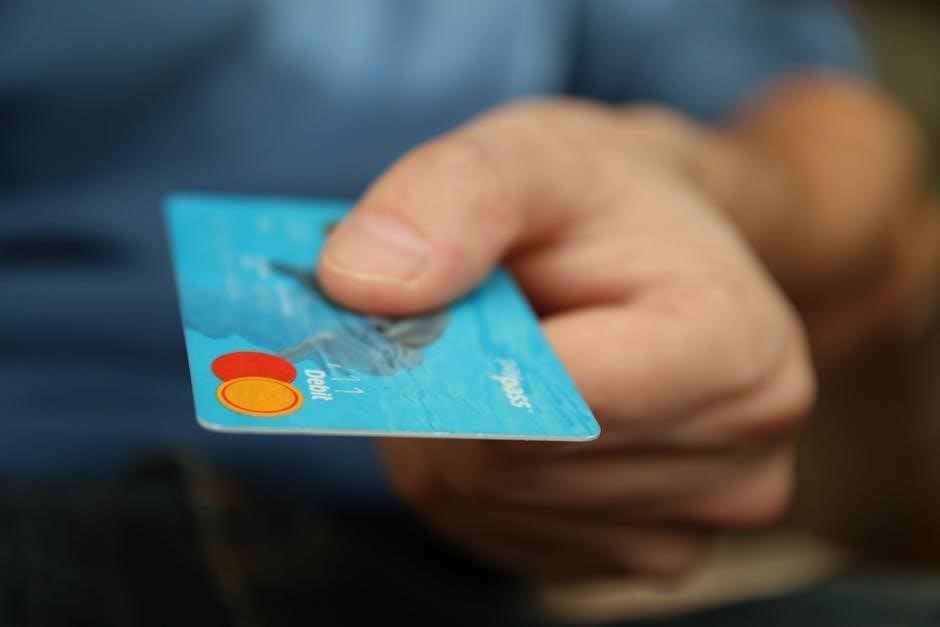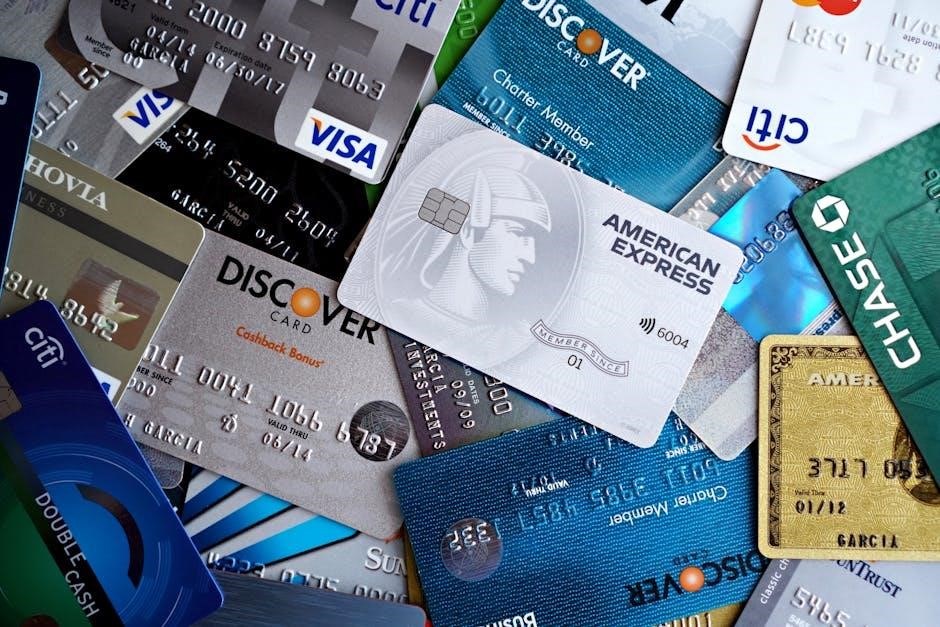A conditional waiver and release on final payment is a legal document used to release lien rights upon payment. It ensures contractors and owners maintain trust, as claims are waived only after payment is confirmed, preventing disputes and ensuring project completion smoothly.
1.1 Definition and Purpose
A conditional waiver and release on final payment is a legal document that waives a claimant’s lien rights upon receipt of final payment. Its purpose is to provide assurance to both contractors and project owners that payment has been made, and in return, the claimant relinquishes their right to file a lien. This document is essential for finalizing payment processes and ensuring smooth project completion by preventing potential disputes over unpaid claims. It operates conditionally, meaning the waiver only takes effect once payment is confirmed.
1.2 Importance in Construction Projects
The conditional waiver and release on final payment is crucial in construction projects as it ensures that payments are made without lingering lien rights. It protects contractors by confirming they have received payment before releasing their rights, preventing potential disputes. For project owners, it provides assurance that once final payment is made, they won’t face unexpected claims. This document streamlines the payment process, reduces legal risks, and fosters trust between contractors and owners, ensuring smooth project completion and accountability for all parties involved.

Understanding Conditional Waiver and Release
A conditional waiver and release is a legal document that waives lien rights upon final payment, ensuring claims are released only after payment confirmation, preventing disputes.
2.1 Differences from Unconditional Waiver
A conditional waiver and release differs from an unconditional waiver in that it only becomes effective upon receipt of final payment. Unlike an unconditional waiver, which immediately releases all claims upon signing, the conditional version protects the claimant until payment is confirmed. This ensures that lien rights are not surrendered before payment is actually received, providing an added layer of security. The conditional waiver is generally considered safer for claimants, as it avoids the risk of releasing rights without payment being finalized.
2.2 Legal Implications and Protections
The conditional waiver and release on final payment offers legal protection by ensuring that lien rights are waived only after payment is received. This document safeguards contractors and subcontractors from unpaid claims while providing project owners with assurance that payments will not result in liens. It prevents false claims and ensures compliance with state lien laws, balancing the interests of all parties involved. Proper execution of this form reduces the risk of litigation and ensures a smooth payment process.

Types of Lien Waivers
3.1 Conditional Waiver
A conditional waiver becomes effective only after payment is received, offering protection to contractors until funds are cleared.
3.2 Unconditional Waiver
An unconditional waiver releases lien rights immediately upon signing, regardless of payment status, providing instant assurance to project owners.
A conditional waiver is a legal document that releases a claimant’s lien rights upon final payment. It ensures that lien rights are waived only after payment is confirmed. This type of waiver is often used in construction projects to protect contractors and subcontractors while ensuring project owners receive completed work. The conditional waiver becomes effective once payment is received, providing a safeguard for both parties. It is commonly used when a contractor is owed money but wants to ensure payment before releasing their rights. This document is crucial for maintaining trust and avoiding disputes in construction projects.
An unconditional waiver is a legal document that releases a claimant’s lien rights without requiring payment confirmation. Unlike the conditional waiver, it immediately waives all rights upon execution, offering no protection if payment fails. It is often used for progress payments, providing owners immediate assurance. However, it is riskier for contractors, as they relinquish rights without payment guarantees. It is essential to use this form cautiously, ensuring payment is secured before signing to avoid financial exposure.

Legal Requirements and Compliance
Conditional waiver and release forms must comply with state laws like California Civil Code Section 3262(d)(3). Proper execution and legal counsel are crucial to avoid legal issues.
4.1 California Civil Code Section 3262(d)(3)
California Civil Code Section 3262(d)(3) governs the use of conditional waivers and releases in construction projects. This statute requires that a conditional waiver and release form be used when a final payment is made; The form must include specific language to ensure compliance, protecting both contractors and project owners. It is a statutory requirement for final payments, ensuring that lien rights are waived only after payment is received. This section is crucial for maintaining legal compliance in California construction projects.
4.2 State-Specific Variations
Conditional waiver and release forms vary by state, with specific legal requirements. California, for instance, mandates compliance with Civil Code Section 3262(d)(3) for final payment waivers. Other states may have different formatting or content rules. It’s crucial to use state-compliant forms to ensure enforceability. Variations often include additional clauses or omit certain sections based on local laws. Understanding these differences is essential to avoid legal issues and ensure proper execution. Always verify the form meets your state’s legal standards before use.

Process of Creating and Using Conditional Waiver
Creating a conditional waiver involves drafting a legally binding document, exchanging it for payment, and confirming receipt. Use it to finalize payments and release lien rights securely.
5;1 Understanding the Payment Process
The payment process involves verifying that final payment has been received before executing the conditional waiver. Contractors must ensure all work is completed and approved. The waiver is tied to payment confirmation, protecting both parties legally. Understanding this process is crucial for ensuring compliance and maintaining trust between contractors and project owners. Proper documentation and verification steps are essential to avoid disputes and ensure smooth project completion.
5.2 Steps to Execute the Document
To execute a conditional waiver and release on final payment, start by verifying the payment amount and ensuring it matches the agreed terms. Next, fill in the form with accurate details, including project specifics, payment information, and the parties involved. Both the contractor and the owner or payer must sign the document, with witnesses or notarization if required. Finally, deliver the signed document to the payer and retain a copy for records. This process ensures legality and mutual understanding under California Civil Code Section 3262(d)(3).

Benefits of Using Conditional Waiver
The conditional waiver provides protection for contractors by ensuring payment receipt before releasing lien rights, reducing non-payment risks. It offers assurance to project owners by guaranteeing lien releases post-payment, fostering trust and smooth project operations.
6.1 Protection for Contractors
A conditional waiver and release on final payment provides contractors with legal protection by ensuring that lien rights are waived only after payment is received. This prevents disputes and ensures contractors are not liable for claims once payment is confirmed. It safeguards contractors from potential liens or claims arising after payment, offering a secure way to finalize projects. By linking the waiver to payment confirmation, it balances contractor protections with owner assurances, fostering trust and smooth project completion.
6.2 Assurance for Project Owners
A conditional waiver and release on final payment provides project owners with assurance that lien rights are waived once payment is made. This document ensures owners are protected from potential liens after final payment, offering peace of mind. It confirms that contractors or subcontractors cannot file claims post-payment, reducing financial risks. This assurance is crucial for maintaining trust and ensuring project completion without disputes over payments. Owners gain clarity and security, knowing their liability is limited once the final payment is processed.

Risks and Pitfalls
Risks include drafting errors, incomplete payment verification, and unintended lien rights waiver. Improper execution may expose parties to claims or disputes, emphasizing the need for precision and compliance.
7.1 Consequences of Not Using the Form
Failing to use a conditional waiver and release form can lead to unresolved payment disputes, legal complications, and potential liens on the property. Without this document, contractors or subcontractors may retain lien rights, delaying project completion and increasing costs. It can also result in breach of contract claims, harming relationships between parties. Proper use of the form ensures clarity and protection, preventing such issues and maintaining smooth project workflows.
7.2 Potential Drafting Errors
Potential drafting errors in a conditional waiver and release on final payment can lead to significant legal issues. Common mistakes include incorrect payment details, failure to specify conditions, or omitting required legal language. Ambiguities in the document, such as unclear descriptions of work or parties involved, can render it unenforceable. Additionally, errors in referencing applicable laws or misstating the rights being waived may expose parties to unintended risks. Careful drafting and legal review are essential to avoid such pitfalls and ensure the document’s validity and enforceability.

Best Practices for Implementation
8.1 Timing of Waiver Execution
Ensure the conditional waiver is executed only after final payment confirmation to avoid premature release of rights. Consulting legal experts can prevent drafting errors and ensure compliance with state laws.
The timing of executing a conditional waiver and release is critical to ensure all parties’ interests are protected. Ideally, the waiver should be signed after receiving confirmation of final payment. This prevents scenarios where payments are reversed or fail, safeguarding contractors’ rights. Adhering to state-specific regulations, such as California Civil Code Section 3262(d)(3), helps maintain compliance. Proper timing avoids unnecessary disputes and ensures smooth project completion.
8.2 Seeking Legal Counsel
Consulting with a legal expert is crucial when dealing with conditional waivers and releases. They ensure compliance with state laws, such as California Civil Code Section 3262(d)(3), and review documents for accuracy. Legal counsel helps prevent drafting errors, protects rights, and clarifies terms. They can address state-specific variations and provide tailored advice, reducing risks and ensuring all parties’ interests are safeguarded. This step is essential for avoiding legal disputes and ensuring the waiver aligns with project requirements and local regulations.
Comparing with Other Lien Waivers
Conditional waivers differ from unconditional waivers as they depend on payment confirmation. Unlike progress payment waivers, they apply only to final payments, balancing cash flow and protection.
9.1 Conditional vs. Unconditional
A conditional waiver and release on final payment becomes effective only after payment is received, protecting contractors if payments fail. In contrast, unconditional waivers are immediate, offering no such protection. Conditional waivers are preferred for final payments, as they ensure payment confirmation before releasing claims, while unconditional waivers are riskier, providing no safeguards if payments are delayed or reversed. This distinction is crucial for contractors to avoid financial exposure in construction projects.
9.2 Progress Payment Waivers
Progress payment waivers are similar to conditional waivers but are used for partial payments during a project. They release lien rights up to the amount paid but do not wait for final payment. These waivers are exchanged for each progress payment, ensuring contractors receive payment while maintaining project cash flow. Unlike conditional waivers, progress waivers do not depend on the final payment’s confirmation, making them suitable for ongoing work. They are essential for managing payments in construction projects, balancing contractor and owner interests while preventing payment disputes. Proper timing and accuracy are critical to avoid losing lien rights prematurely.

How to Fill Out the Form
Enter project details, payment amount, and parties involved. Specify the rights being waived and ensure signatures are obtained. Avoid errors in drafting or omissions.
10.1 Essential Information Required
The conditional waiver and release form must include the project name, contractor’s details, payment amount, and a clear statement of rights being waived. It should specify the type of waiver (conditional or unconditional) and reference the relevant payment. Signatures from all parties involved, along with dates, are mandatory. The form must comply with state laws, such as California Civil Code Section 3262(d)(3), to ensure enforceability. Accurate and complete information is critical to avoid legal disputes or voiding the waiver.
10.2 Common Mistakes to Avoid
- Not including specific payment details or dates can invalidate the waiver.
- Failing to list all parties involved in the transaction may lead to disputes.
- Improper notarization or missing signatures can render the document unenforceable.
- Using an outdated or incorrect form that doesn’t comply with local laws.
- Forgetting to attach supporting documents like receipts or invoices.
- Not retaining a copy for personal records, which can complicate future disputes.
These errors highlight the importance of meticulous preparation and legal review to ensure the document’s validity and enforceability.
Frequently Asked Questions
- When should a conditional waiver be used?
- What happens if the payment fails after signing?
- Can the waiver be revoked after execution?
- Does it cover all project-related claims?
These questions address common concerns about the waiver’s application and implications.
11.1 When to Use the Waiver
The conditional waiver and release should be used when final payment has been made or is imminent. It is typically executed after all work is completed, disputes resolved, and payment received. Use it when ensuring lien rights are waived only upon confirmed payment. Avoid using it prematurely, as this could risk losing leverage. Ideal for final settlements, it provides assurance that payment has been processed. Ensure compliance with state laws, like California’s Civil Code, and consult legal counsel to avoid errors. Timing is critical to protect all parties involved.
11.2 What Happens After Signing
After signing a conditional waiver and release on final payment, the contractor relinquishes their right to file a lien upon receipt of payment. This agreement ensures that once the payment is successfully processed, the contractor cannot pursue a lien against the property, fostering trust between the contractor and the project owner. The waiver’s conditional nature protects the contractor if payment issues arise, ensuring they retain lien rights until payment is confirmed. This process facilitates smoother project completion by minimizing potential legal disputes.

Key Takeaways
Conditional waivers protect contractors by ensuring payment before releasing lien rights, while offering owners assurance against future claims, balancing trust and legal security in construction projects effectively.
12.1 Summary of Benefits
The conditional waiver and release on final payment offers significant benefits, primarily protecting both contractors and project owners. It ensures that lien rights are waived only after payment is confirmed, reducing the risk of disputes. This document provides clarity and assurance, fostering trust between parties. By using this form, contractors can avoid potential legal complications, while owners gain security knowing payments are finalized. It streamlines the payment process, ensuring projects proceed smoothly and all parties are satisfied with the transaction. This tool is essential for maintaining fair and transparent financial dealings in construction projects.
12.2 Final Thoughts
A conditional waiver and release on final payment is a critical document ensuring clarity and fairness in construction transactions. It protects contractors by confirming payment receipt and safeguards owners by releasing lien rights. Proper execution and compliance with state laws, like California’s Civil Code Section 3262(d)(3), are essential. This document is not just a receipt but a legal safeguard, fostering trust and preventing disputes. Its use is vital for smooth project completion and maintaining healthy contractor-owner relationships in the construction industry.